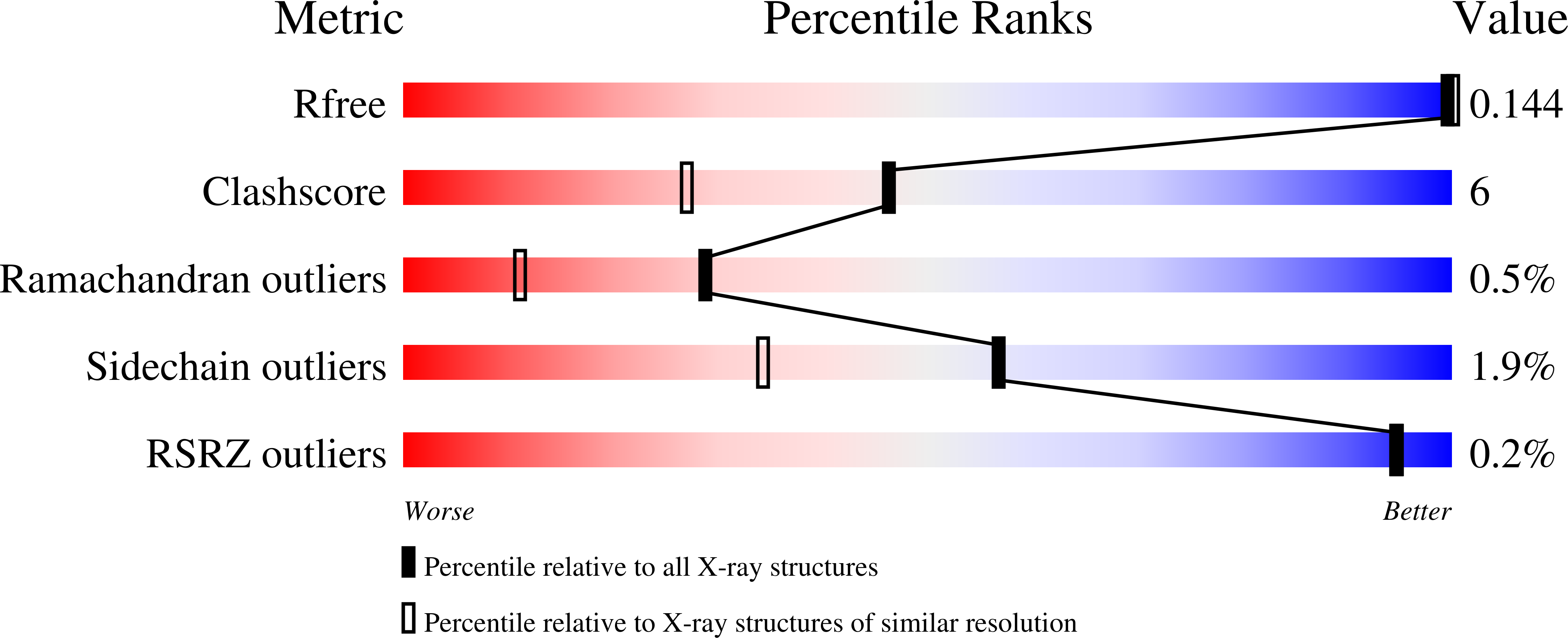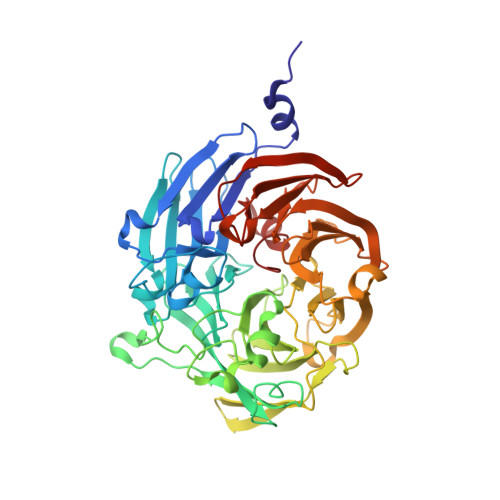Trinuclear copper biocatalytic center forms an active site of thiocyanate dehydrogenase.
Tikhonova, T.V., Sorokin, D.Y., Hagen, W.R., Khrenova, M.G., Muyzer, G., Rakitina, T.V., Shabalin, I.G., Trofimov, A.A., Tsallagov, S.I., Popov, V.O.(2020) Proc Natl Acad Sci U S A 117: 5280-5290
- PubMed: 32094184
- DOI: https://doi.org/10.1073/pnas.1922133117
- Primary Citation of Related Structures:
6G50, 6I3Q, 6SJI, 6UWE - PubMed Abstract:
Biocatalytic copper centers are generally involved in the activation and reduction of dioxygen, with only few exceptions known. Here we report the discovery and characterization of a previously undescribed copper center that forms the active site of a copper-containing enzyme thiocyanate dehydrogenase (suggested EC 1.8.2.7) that was purified from the haloalkaliphilic sulfur-oxidizing bacterium of the genus Thioalkalivibrio ubiquitous in saline alkaline soda lakes. The copper cluster is formed by three copper ions located at the corners of a near-isosceles triangle and facilitates a direct thiocyanate conversion into cyanate, elemental sulfur, and two reducing equivalents without involvement of molecular oxygen. A molecular mechanism of catalysis is suggested based on high-resolution three-dimensional structures, electron paramagnetic resonance (EPR) spectroscopy, quantum mechanics/molecular mechanics (QM/MM) simulations, kinetic studies, and the results of site-directed mutagenesis.
Organizational Affiliation:
Research Centre of Biotechnology, Russian Academy of Sciences, 119071 Moscow, Russia.

















